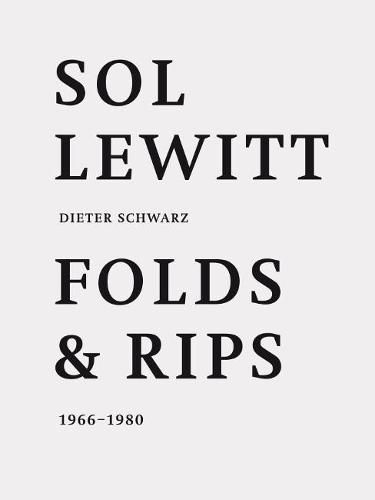Readings Newsletter
Become a Readings Member to make your shopping experience even easier.
Sign in or sign up for free!
You’re not far away from qualifying for FREE standard shipping within Australia
You’ve qualified for FREE standard shipping within Australia
The cart is loading…






A debut presentation of minimalist pioneer Sol LeWitt’s torn and folded paper works, his brilliant extension of the parameters and definitions of drawing
In 1966, Sol LeWitt (1928-2007) conceived a new type of work that he described as drawings without drawing, in which he replaced the act of drawing itself by using various ways of folding paper. In 1969, he started to regularly produce what he called Folds, first as gifts to friends, then as works to be distributed by his dealers. In 1971 he added the Rips, drawings made of ripped paper.
LeWitt developed this extended approach to drawing from ripping papers of various sizes and colors to working with city maps and aerial photos of Florence, Manhattan and Chicago from which he removed various areas. This systematic approach, on which so much of LeWitt’s work is famously based, was also applied to the Folds and the Rips, and so they tended to be created in series.
The book presents these works for the first time, along with a historical essay by Dieter Schwarz and full-color reproductions of the Folds and the Rips.
$9.00 standard shipping within Australia
FREE standard shipping within Australia for orders over $100.00
Express & International shipping calculated at checkout
A debut presentation of minimalist pioneer Sol LeWitt’s torn and folded paper works, his brilliant extension of the parameters and definitions of drawing
In 1966, Sol LeWitt (1928-2007) conceived a new type of work that he described as drawings without drawing, in which he replaced the act of drawing itself by using various ways of folding paper. In 1969, he started to regularly produce what he called Folds, first as gifts to friends, then as works to be distributed by his dealers. In 1971 he added the Rips, drawings made of ripped paper.
LeWitt developed this extended approach to drawing from ripping papers of various sizes and colors to working with city maps and aerial photos of Florence, Manhattan and Chicago from which he removed various areas. This systematic approach, on which so much of LeWitt’s work is famously based, was also applied to the Folds and the Rips, and so they tended to be created in series.
The book presents these works for the first time, along with a historical essay by Dieter Schwarz and full-color reproductions of the Folds and the Rips.